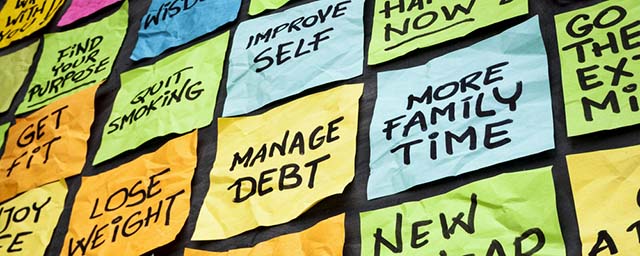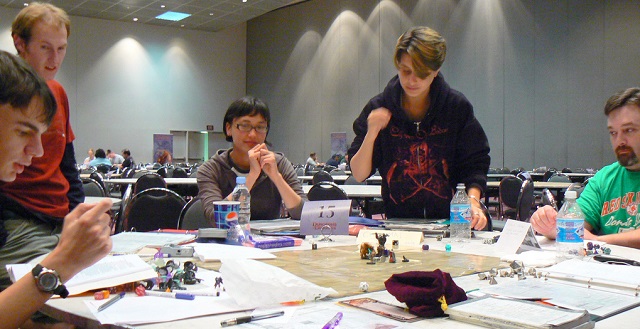

I used to be a quitter. Every day would be filled with false starts and high ambitions, and I might even make a lot of progress towards whatever goal I had in mind at the time, but ultimately I would always give up before reaching said goals.
The New Year Resolution season is upon us, and many of us are hoping that this year will be the year where everything turns around. You’re going to exercise every day. You’re going to lose 50 pounds. You’re going to launch that new business idea. But more likely than not, you’re just going to quit.
Here’s how I stopped being a quitter. It wasn’t easy, and it took a while to get to the point where I actually finished a project, but it was certainly worthwhile. Want to stop quitting? Avoid these killer mistakes.
The entire “New Year Resolution” phenomenon essentially boils down to habit-making, and habits are built over time. The opposite is true, too: bad habits are dismantled over time. Your job is to contribute a little bit each and every day until those habits are built (or dismantled).

The proper way to do this is to create a routine. And as counter-intuitive as it may sound, this is especially important if your resolution goals are creative. Here are several free habit-changing apps that can help:
Routines can be a pain, but here’s the good news: habits can form or break in just 21 days. All you have to do is hold out for three weeks and you’ll find it much easier to stay on track towards your goals.
However, this doesn’t mean you’ll be immune to giving up, so always stick to the routine. The routine is invaluable because it keeps you honest even when you feel like quitting.
If your New Year Resolution involves learning a new technical skill, then there’s a good chance that you’re going to feel overwhelmed by the learning curve at some point — and when that inevitably happens, you’re going to want to quit.
This is a huge issue for newbies who are trying to learn how to program, which tends to manifest as programmer’s block. But really, it could happen for any skilled pursuit: photography, digital art, web design, or even woodworking. When your ability lags behind your vision, you become frustrated.

Fortunately, you can overcome this with a solid training plan. Instead of deciding to “learn 3D animation”, take some time and outline what your progression will look like. A goal-based vision board can be quite useful for this.
But at the end of the day, you’re frustrated because you simply aren’t skilled enough, and the only way around this is to keep learning, keep practicing, and keep sticking to your routine.
Need help with your training? Check out these photography YouTube channels, these photography Lynda.com courses, these web design YouTube channels, these digital art Lynda.com courses, and last but not least, these woodworking YouTube channels.
Few things are as detrimental to progress than a poorly-defined goal. Here’s what a poorly-defined goal looks like:
Why are these bad? Because they’re lofty, big, long-term, vague, abstract, and lacking urgency. For example, at what point will I be able to say, “I now know how to draw”? At this point, this goal is no more than a concept or wish.
A properly-defined goal — also known as a S.M.A.R.T. goal — has all five of the following characteristics:
Here’s a short rule of thumb: a properly-defined goal is one that can be checked off from a to-do list within 24-72 hours. As such, to-do lists make excellent supplementary tools to the habit-forming goal trackers mentioned above.
The best part about S.M.A.R.T. goals is that they play a double role: not only are they better for tracking progress, but they act as micro habits that encourage behavioral momentum. This is key to overcoming the tendency to quit.
One big paradox is that highly ambitious and motivated people tend to have too many goals, resulting in paralysis as they struggle to commit. When you want too many things, you could end up in an endless cycle of quitting-and-restarting.
In other words, indecision can kill your progress overnight.
Fortunately, indecision is a curable disease. Once you understand the psychology of indecision and why you have so much trouble committing, it becomes easier to pick and choose which goals really matter to you — but the problem won’t solve itself.

There are only so many hours in a day, so if you really want to commit to a new goal, then you must sacrifice something else in its place: watch less Netflix, relinquish responsibilities at work, give up a personal hobby, etc.
But which goals should you pursue and which ones should you give up? That’s up to you. However, if you’re having trouble, here are a few apps that can help you make those tough decisions:
If you don’t want to give up anything, then you can compromise by postponing secondary goals instead. For example, instead of learning three new things at once, try spreading them out across the year.
Whatever you do, just make sure that you don’t overdo it by working too hard and sacrificing your health in the process.
The number one reason why creatives quit the pursuit of their dreams? Fear of failure. If you feel like you aren’t good enough or that your work sucks or that you could never be a good [insert goal here], then you know what I’m talking about.
Take this to heart: you are not alone!
Many TED Talks on creativity exist, but there’s one that we want to highlight. Elizabeth Gilbert’s “Your Elusive Creative Genius” presentation is a must-watch for anyone struggling with the fear of creative failure:
The fear of failure also extends beyond the creative. For example, many people stop going to the gym because they think they’ll never be able to achieve the weight, strength, or body definition that they truly want — and so they quit.
But fear is good. The ability to take calculated risks is one thing that separates those who grow from those who stall. In fact, every successful entrepreneur knows that staying within one’s comfort zone is the recipe for stagnation.
It all comes down to how we think. For most of us, lack of success means failure — but is that true? Perhaps there’s a better way to think about success and failure.
Quitting is easy. Trust me, I know. I’ve quit hundreds of projects, hobbies, and pursuits over the past decade and I have a lot of regrets because of that. But these are the lessons that have helped me outgrow that mentality, and I hope they help you, too.
How tough is your struggle with New Year Resolutions? Got any tips for success? What can we do to avoid the never-ending quit cycle? Tell us in the comments below!
Image Credits: Sitting young man looking by Kamenetskiy Konstantin via Shutterstock, Digital Art Practice by Diego Cervo via Shutterstock, New Year Resolutions by marekuliasz via Shutterstock, Business cartoon by Cartoon Resource via Shutterstock



